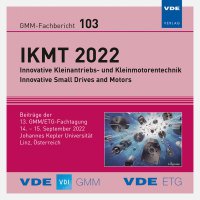Reduction of eddy current losses in stacked laminations via electrochemical deburring
Konferenz: IKMT 2022 - 13. GMM/ETG-Fachtagung
14.09.2022 - 15.09.2022 in Linz, Österreich
Tagungsband: GMM-Fb. 103: IKMT 2022
Seiten: 6Sprache: EnglischTyp: PDF
Autoren:
Trnka, Nikolaus; Schleicher, Andre; Lorenz, Fabian; Werner, Ralf (Chemnitz University of Technology, Chemnitz, Germany)
Inhalt:
The sheets of stators or rotors of electrical machines are electrically insulated from each other to prevent interlaminar eddy currents. The manufacturing of the sheets generates burrs, which lead to interlaminar short circuits around the edges. These interlaminar current paths significantly increase the eddy current losses as well as the required magnetomotive force and thus current for the desired flux. In extreme cases, the lamination stacks can be thermally damaged or destroyed at the short-circuited points. The mentioned problems especially arise during post processing of stator or rotor laminations by milling and turning, which create massive interlaminar short circuits. Therefore, these processes are rarely used, although they are a simple and economical way to produce mechanically precise components. This paper provides an overview of an unconventional and potentially economical method to effectively reduce the short circuits between the sheet edges. For this purpose, an electrochemical process is used to dissolve the burrs and thus the short circuits. The method is investigated using cuboid and ring-shaped stacks. The samples are examined in the unmachined state, in the machined state, and after the electrochemical etching process. For this purpose, optical micrographs, the contact resistances of the laminations, and the impedances and magnetic hysteresis curves at different frequencies are evaluated. It is found that the eddy current losses are a decisive factor at frequencies above 1 kHz and are significantly increased during mechanical processing. With a suitable etch depth, the existing short circuits or those created by machining can be completely removed. The losses of the etched samples reach comparable values to slightly lower values than those of the unmachined samples. The results also indicate a slight reduction in hysteresis losses at lower frequencies. In principle, the electrochemical process allows short process times and high surface finishes. However, this depends crucially on suitable process engineering.


